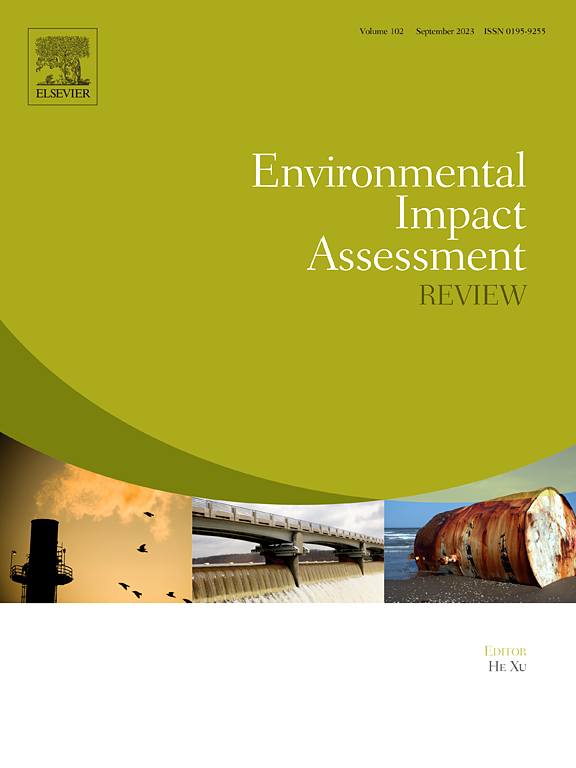Combining protection and restoration strategies enables cost-effective compensation with ecological equivalence in Brazil
IF 9.8
1区 社会学
Q1 ENVIRONMENTAL STUDIES
引用次数: 0
Abstract
Ecological compensation and offsets have been used worldwide to repair the residual impacts caused by human activities. Achieving ecological equivalence in them has been challenging, and conflicts between development and environmental sectors commonly arise. We addressed this issue by testing an approach that is cost-effective and includes equivalence in compensation. We used the Brazilian Native Vegetation Protection Law's Legal Reserve (a native vegetation percentage of every rural property that must be conserved) compensation scheme as a study case. We created scenarios to test the law's three main compensation strategies (vegetation protection, restoration, and regularization of private lands inside public protected areas) separately and combined. We used a recently developed framework to assess ecological equivalence, including biodiversity, landscape, and ecosystem attributes measured and exchanged in a disaggregated manner. Cost-effectiveness was evaluated regarding deficit resolution (deficit in Legal Reserve needing compensation), economic costs, and native vegetation gained (additionality). The most effective strategy for deficit resolution was restoration (98.99 % of resolution), followed by protection (40.22 %) and regularization (0.15 %). Restoration was the most expensive strategy, but it also had the highest additionality. Combined scenarios resulted in balanced cost-effectiveness. The combination of protection followed by restoration was the best strategy, since its deficit resolution was high (99.47 %), with an intermediate cost and additionality. It is thus possible to make cost-effective compensation exchanges accounting for ecological equivalence adequately. We also used simple calculations in a new spatial optimization automated deficit and compensation prioritization path to generate spatially explicit results. Considering ecological equivalence guarantees additionality and more equitable spatial distribution of ecological benefits. These findings underscore the importance of incorporating equivalence in compensation, offering a promising avenue for bolstering efforts in compensation and offset schemes to address the ongoing climate and environmental global crisis by proposing a new approach to achieve this.
将保护和恢复策略结合起来,在巴西实现了具有成本效益和生态等效的补偿
生态补偿与补偿是修复人类活动遗留影响的常用方法。在这些地区实现生态平衡一直是一个挑战,发展部门和环境部门之间的冲突经常出现。我们通过测试一种具有成本效益并包含等效补偿的方法来解决这个问题。我们使用巴西原生植被保护法的法定保护区(必须保护的每个农村财产的原生植被百分比)补偿方案作为研究案例。我们创建了不同的场景来测试法律的三种主要补偿策略(植被保护、恢复和公共保护区内私有土地的正规化)。我们使用最近开发的框架来评估生态等效性,包括以分类方式测量和交换的生物多样性、景观和生态系统属性。成本效益评估了赤字解决(需要补偿的法定储备赤字)、经济成本和获得的原生植被(附加性)。最有效的解决方案是修复(98.99%),其次是保护(40.22%)和规范化(0.15%)。修复是最昂贵的策略,但它也有最高的附加性。综合方案产生平衡的成本效益。保护后修复的组合是最佳策略,因为其赤字解决率高(99.47%),具有中等成本和附加性。因此,有可能使具有成本效益的补偿交换充分考虑到生态等效性。我们还在新的空间优化自动赤字和补偿优先级路径中使用简单的计算来生成空间明确的结果。考虑生态等效性保证了生态效益的附加性和更公平的空间分配。这些发现强调了将等值纳入补偿的重要性,为加强补偿和抵消计划的努力提供了一条有希望的途径,通过提出实现这一目标的新方法来解决当前的气候和环境全球危机。
本文章由计算机程序翻译,如有差异,请以英文原文为准。
求助全文
约1分钟内获得全文
求助全文
来源期刊

Environmental Impact Assessment Review
ENVIRONMENTAL STUDIES-
CiteScore
12.60
自引率
10.10%
发文量
200
审稿时长
33 days
期刊介绍:
Environmental Impact Assessment Review is an interdisciplinary journal that serves a global audience of practitioners, policymakers, and academics involved in assessing the environmental impact of policies, projects, processes, and products. The journal focuses on innovative theory and practice in environmental impact assessment (EIA). Papers are expected to present innovative ideas, be topical, and coherent. The journal emphasizes concepts, methods, techniques, approaches, and systems related to EIA theory and practice.
 求助内容:
求助内容: 应助结果提醒方式:
应助结果提醒方式:


